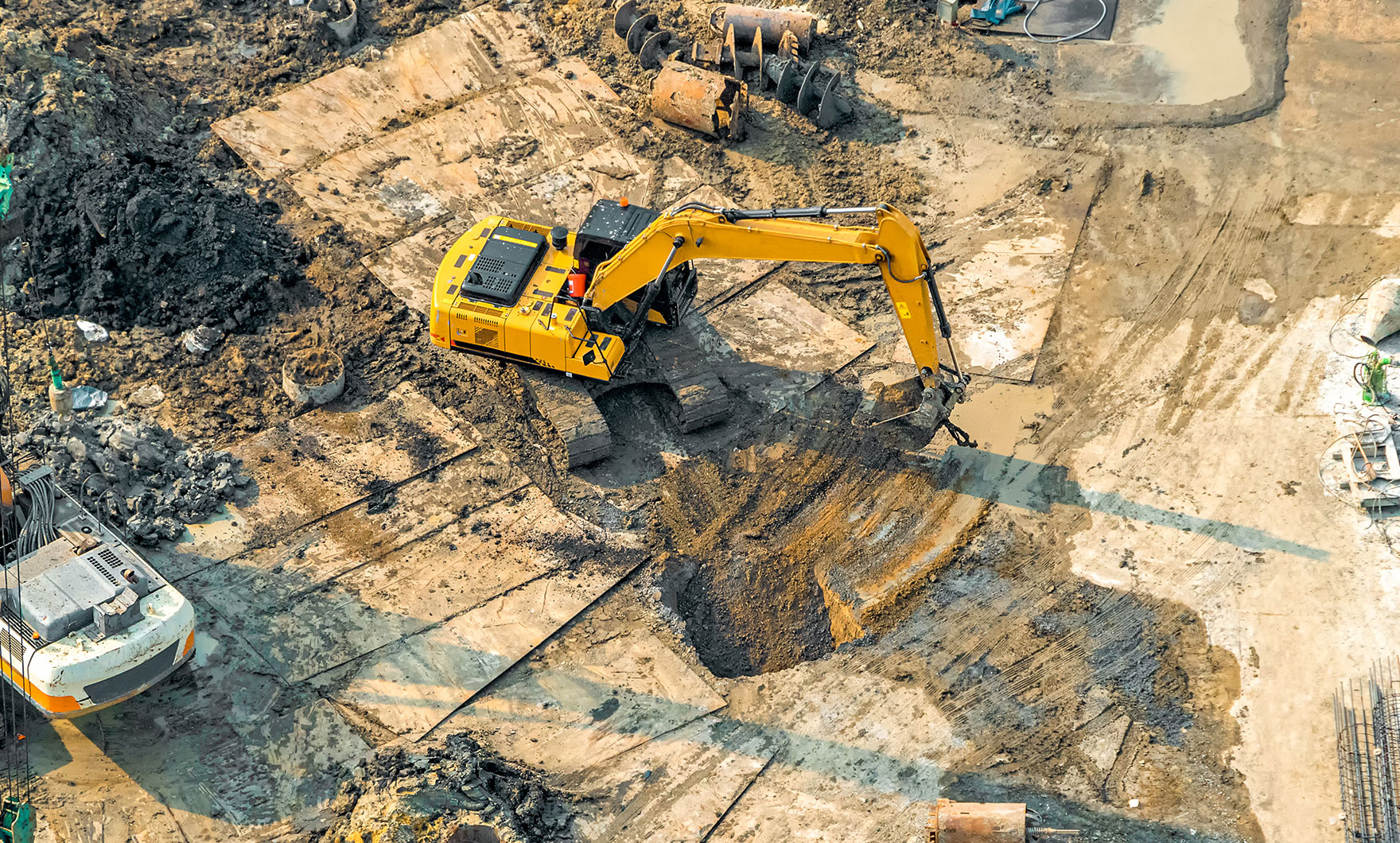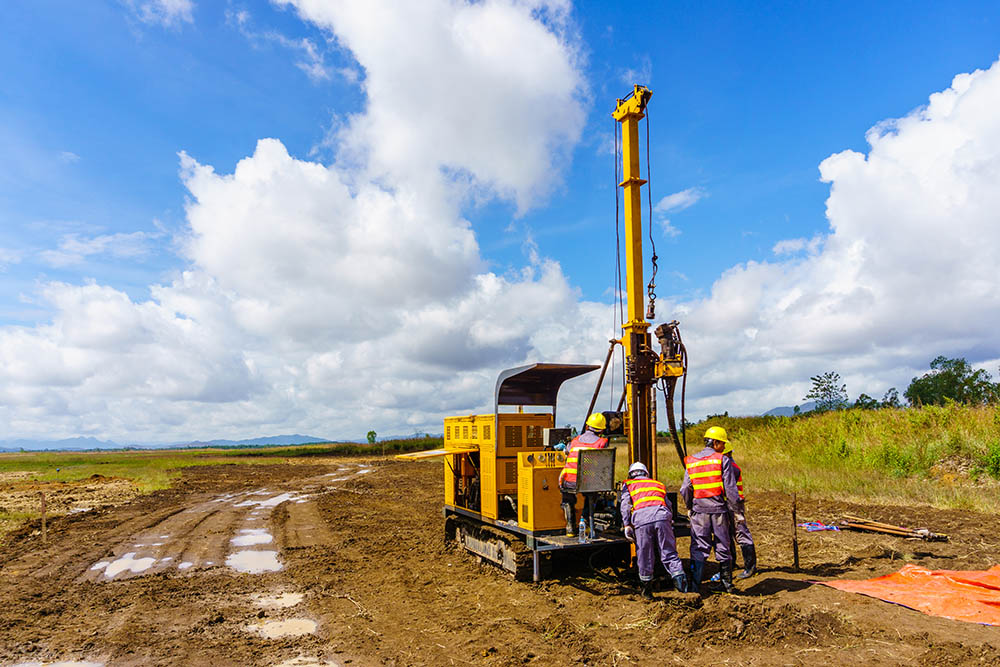How a Geotechnical Specialist Can Ensure the Success of Your Building Structures
How a Geotechnical Specialist Can Ensure the Success of Your Building Structures
Blog Article
The Significance of Geotechnical Engineering in Resolving Ecological Difficulties and Enhancing Building Safety
Geotechnical engineering functions as a foundation in the crossway of environmental stewardship and construction security, offering important insights right into the actions of dirt and rock under numerous problems. This technique not only addresses pressing environmental difficulties such as soil erosion and groundwater protection but also enhances the robustness of infrastructure against natural risks. By executing tactical website examinations and tailored reduction actions, geotechnical designers play an important duty in safeguarding both human lives and environmental stability. Yet, the complexities of these challenges increase vital questions about the future direction of this field and its effects for lasting development.

Function of Geotechnical Design
Geotechnical design plays a critical function in the style and building and construction of infrastructure by dealing with the habits of dirt and rock products under numerous problems. This field of engineering is crucial for understanding the communication in between structures and the ground, that includes determining the load-bearing ability of soil, evaluating stability, and predicting prospective negotiation or failing.
Geotechnical engineers are accountable for performing website examinations, which involve sampling and testing soil and rock to gather data on their chemical and physical buildings. This information is vital for developing structures, retaining wall surfaces, and other earth-retaining structures that make certain safety and security and durability. Geotechnical design educates the selection of proper building approaches and materials, thus minimizing dangers connected with soil behavior.
In addition, the assimilation of geotechnical design principles into metropolitan planning and ecological management is essential for addressing difficulties such as ground contamination and groundwater management. By recognizing geotechnical factors, engineers can establish lasting options that enhance the durability of framework against all-natural risks, while likewise advertising environmental stewardship. Inevitably, the function of geotechnical design is vital for achieving risk-free, sturdy, and environmentally mindful building and construction practices.
Soil Disintegration Mitigation
Soil erosion poses a considerable threat to both ecological stability and facilities honesty, impacting about 24 billion loads of abundant soil lost every year worldwide. This sensation is aggravated by elements such as logging, urbanization, and inadequate agricultural methods. Geotechnical engineering plays an essential function in creating effective dirt disintegration mitigation methods that guard both the atmosphere and construction jobs.
One technique entails the execution of disintegration control approaches such as vegetation growing, which supports soil via origin systems. Additionally, the building of preserving wall surfaces and balconies can effectively decrease surface area drainage and protect vulnerable areas from disintegration. Proper drain style is also important; it reduces water accumulation and directs excess drainage away from vital structures.
Furthermore, geotechnical engineers use soil stablizing methods, such as the application of geotextiles and naturally degradable mats, to improve soil communication and protect against degradation - geotechnical engineer description. Normal surveillance and evaluation of erosion-prone websites make it possible for prompt interventions, guaranteeing lasting sustainability. By integrating these approaches, geotechnical engineering not only reduces the effects of soil erosion but also adds to the durability of framework versus ecological challenges, inevitably cultivating a more secure and much more lasting developed setting
Groundwater Defense Approaches
Groundwater functions as a crucial source for drinking water, farming, and industrial procedures, making its protection vital for ecological sustainability and public health. Effective groundwater defense methods are vital in alleviating contamination threats and guaranteeing the longevity of this source.

Normal monitoring of groundwater high quality is additionally vital, allowing very early discovery of contamination sources and facilitating prompt removal efforts. Employing innovative modern technologies, such as geophysical surveys and remote sensing, aids in recognizing prospective risks to groundwater reserves.
In addition, public education and stakeholder involvement are crucial, promoting area support for groundwater defense efforts. geotechnical engineer description. By incorporating governing steps, technological improvements, and community participation, we can produce a comprehensive structure that safeguards groundwater resources while promoting lasting development and building techniques
Landslide Danger Administration
Landslides position significant hazards to both human security and infrastructure, making efficient risk monitoring techniques necessary. Geotechnical design plays an essential role in determining, assessing, and mitigating landslide risks. A comprehensive understanding of incline security, soil auto mechanics, and hydrology is essential for creating reliable danger administration strategies.
The primary step in landslide threat monitoring involves comprehensive site investigations, which include geological mapping and soil testing. These examinations help designers evaluate the capacity for landslides by identifying essential elements such as incline angles, dirt composition, and water web content. Making use of innovative modern technologies such as remote noticing and geophysical studies can boost the precision of these assessments.
Once dangers are identified, suitable reduction measures can be executed. These might include design remedies such as retaining walls, drain systems, and incline stablizing strategies. Additionally, monitoring systems ought to be developed to spot indications of ground activity and changes in water levels, enabling for proactive treatments.

Enhancing Building And Construction Safety
Construction websites often offer a myriad of hazards that can jeopardize worker safety and project integrity. Geotechnical engineering plays an important role in enhancing discover here building safety and security by providing vital understandings right into subsurface conditions. With thorough soil and rock evaluation, geotechnical engineers can identify prospective threats, such as soil instability, groundwater concerns, and seismic vulnerabilities, which may endanger the security of building and construction activities.
Applying geotechnical services, such as appropriate structure design and the use of maintaining frameworks, mitigates these dangers dramatically. These solutions not only make certain the security of the structures being constructed but likewise develop a safer working atmosphere for construction Full Article personnel.
Moreover, fostering a culture of safety via training and adherence to developed security procedures even more improves building and construction site security. By incorporating geotechnical knowledge right into the preparation and implementation phases, building and construction projects can accomplish greater safety and security criteria, ultimately safeguarding workers and guaranteeing successful task conclusion.
Final Thought
Finally, geotechnical engineering offers as a critical technique in dealing with ecological difficulties and advertising construction safety. With efficient soil disintegration reduction, groundwater defense approaches, and landslide danger administration, geotechnical designers add to the development of resilient framework. The assimilation of these methods cultivates a safer building environment and enhances the sustainability of civil engineering tasks. Eventually, the competence of geotechnical engineers is vital in safeguarding both natural deposits index and human lives against potential threats.
Geotechnical design offers as a cornerstone in the intersection of environmental stewardship and building and construction security, supplying crucial understandings into the habits of soil and rock under different problems. Geotechnical design educates the option of proper building and construction techniques and products, thereby minimizing risks associated with dirt actions.
Geotechnical engineering plays a critical function in creating effective soil erosion reduction strategies that protect both the environment and construction projects.
Additionally, geotechnical designers use soil stabilization techniques, such as the application of geotextiles and eco-friendly floor coverings, to boost dirt communication and protect against destruction. With thorough soil and rock analysis, geotechnical designers can determine possible dangers, such as dirt instability, groundwater concerns, and seismic susceptabilities, which may jeopardize the security of construction activities.
Report this page